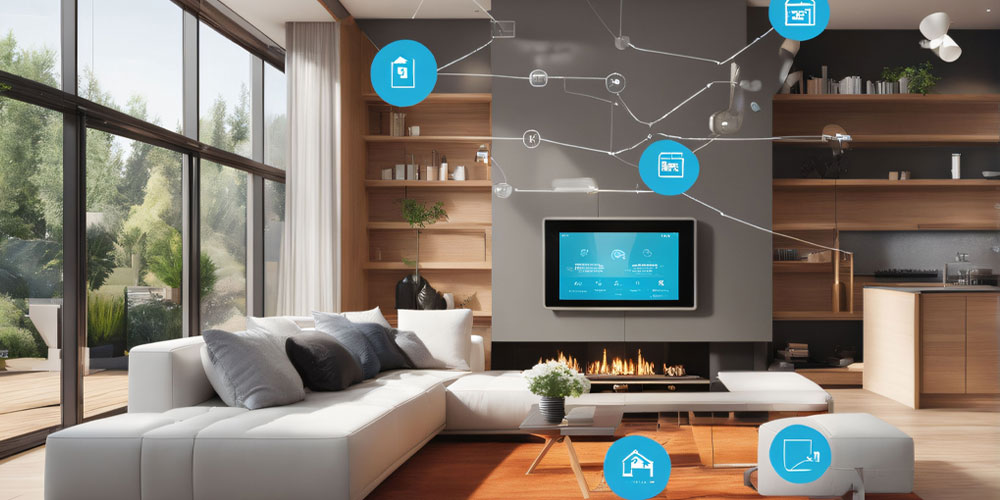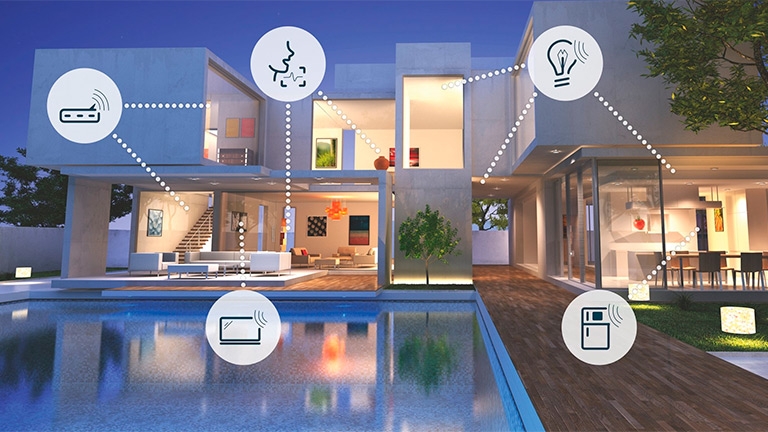In today's fast-paced world, juggling multiple responsibilities can be overwhelming for families. Fortunately, technology offers a solution: the smart home for busy families. By integrating smart devices into home environments, families can save time, enhance security, and boost energy efficiency, all while enjoying a more connected lifestyle.
A smart home isn't just about convenienceit's about creating an environment that supports your daily life seamlessly. With the right setup, you can automate routines, manage energy consumption, and keep your family safe, no matter how hectic your schedule might be.

What is a Smart Home?
A smart home refers to a residence equipped with devices that automate tasks typically handled by humans. These devices are interconnected through the internet, allowing homeowners to control them remotely via a smartphone or other networked device. From lighting and climate control to security systems and appliances, a smart home offers a plethora of possibilities for customization and control.
Benefits of a Smart Home for Busy Families
The benefits of a smart home are numerous, especially for families with packed schedules. Here are a few key advantages:
- Time-Saving Automation: Automate daily tasks such as adjusting thermostats, turning off lights, or starting the coffee maker.
- Enhanced Security: Monitor your home with smart cameras and security systems that alert you of unusual activities.
- Energy Efficiency: Use smart thermostats and lighting to reduce energy consumption and save on bills.
- Remote Access: Control appliances and systems from anywhere, ensuring your home is always just the way you want it.
For more tips on avoiding common mistakes when setting up your smart home, check out this smart home mistakes article.
Essential Smart Home Devices for Families
To create a truly efficient smart home for busy families, consider incorporating these essential devices:
Smart Speakers and Displays
Smart speakers like Amazon Echo or Google Nest Hub serve as the command center for your smart home. They allow you to control other devices via voice commands, set reminders, and even entertain the kids with stories or music.
Smart Thermostats
Smart thermostats help regulate your home's temperature based on your schedule and preferences. They can significantly reduce energy consumption and adjust settings automatically, providing comfort without the hassle.
Smart Lighting Systems
With smart lighting, you can customize the ambiance of any room. Schedule lights to turn on or off at specific times, or control them remotely to ensure your home is well-lit when you return after a long day.
For more smart home ideas, visit this smart home automation ideas article.
Integrating Smart Home Technology with Family Life
Integrating smart technology into family life involves more than just buying gadgets. It requires thoughtful planning and consideration of your family's unique needs. Here are some tips to make the transition smoother:
Start Small
You don't need to transform your entire home overnight. Begin with one or two devices that will have the most immediate impact, such as a smart speaker or a thermostat, and gradually expand your system.
Involve the Whole Family
Make sure everyone in the family knows how to use the new technology. This not only makes the transition smoother but also ensures that everyone can benefit from the conveniences offered.
Prioritize Security
When setting up your smart home, prioritize security by using strong passwords and keeping software up to date. Consider investing in a comprehensive home security system that integrates with your smart devices.
For a comprehensive guide on smart home installations, check out this smart home installation checklist.
Overcoming Challenges with Smart Homes
Despite the many benefits, there are challenges that homeowners might face when implementing smart home technology.
Compatibility Issues
One common challenge is ensuring that different devices are compatible with each other. To avoid this, consider purchasing devices from the same brand or those that support common platforms like Amazon Alexa or Google Assistant.
Cost Considerations
The initial investment in smart home technology can be significant. However, many devices offer savings in the long run, such as reduced energy bills and increased home security.
Learning Curve
Adapting to new technology can be daunting. Take advantage of user manuals, online tutorials, and community forums to get the most out of your smart home devices.
For more on the future of smart homes, read this smart home robotics article.

Frequently Asked Questions
What are the essential devices for a smart home?
Essential devices include smart speakers, thermostats, lighting systems, and security cameras. These provide the foundation for a connected home environment.
How can I ensure my smart home is secure?
Use strong passwords, keep your software updated, and consider a comprehensive security system. Regularly check your settings and devices for any vulnerabilities.
Are smart homes cost-effective in the long run?
While the initial setup may be costly, smart homes can lead to savings through reduced energy bills and increased efficiency, making them cost-effective over time.

